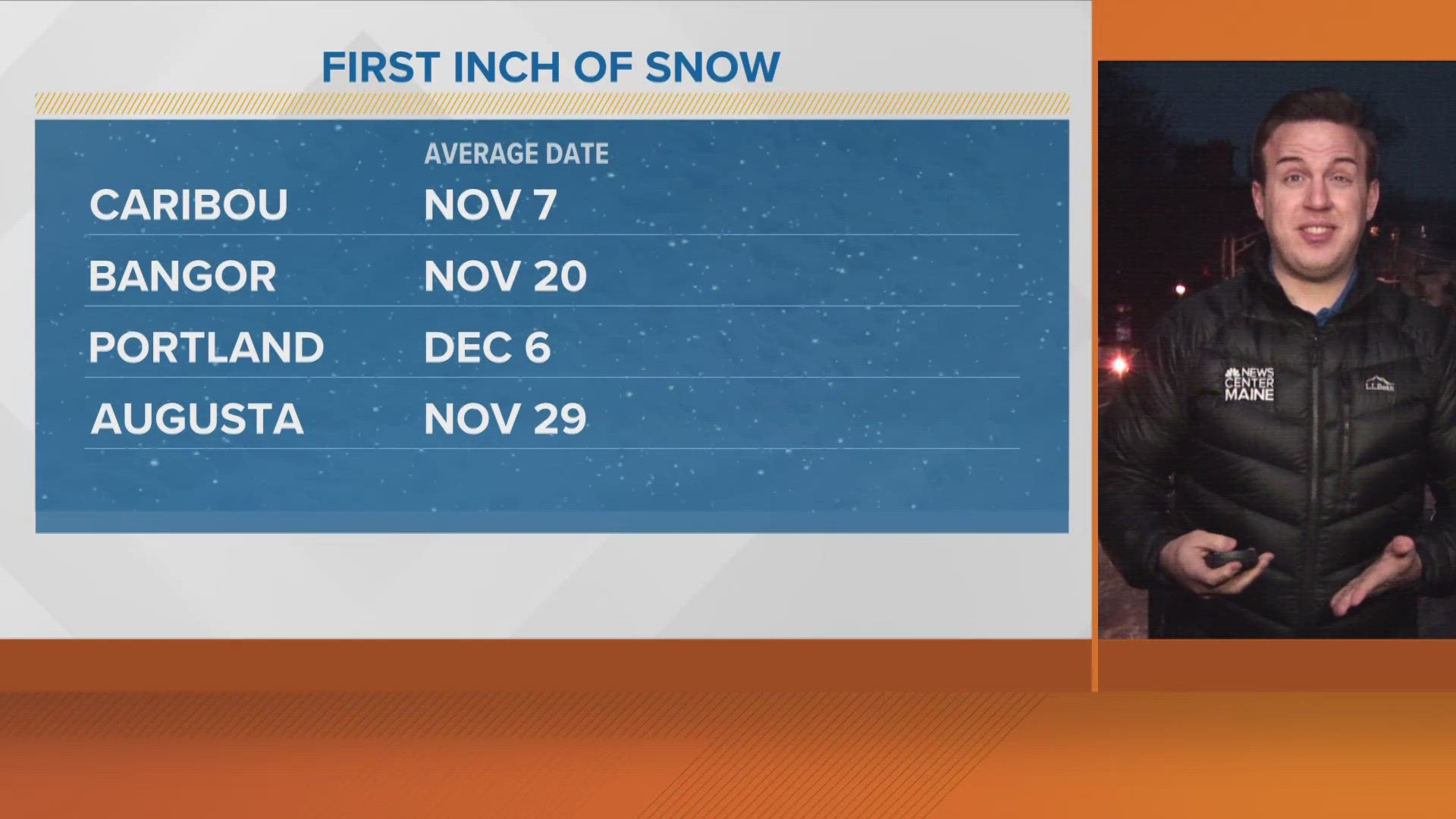PORTLAND, Maine — This winter has been a little unusual. We've still had all of the major players between the snow, rain, and cold temps, but it's been a bit different than what we've been trained to expect from a Maine winter. The past week we were hammered by back-to-back rainstorms washing away most of the snow. High winds and high tides have caused power outages and flooding. It's been a doozy, but how does it compare to an average year so far?
If you live away from the coast, you had a relatively normal start to winter. We got the first inch of snow within a week of when we normally would. That wasn't the same for other areas closer to the coast. The Portland area was over a month late getting their first inch of snow, and that lack of snow continues.

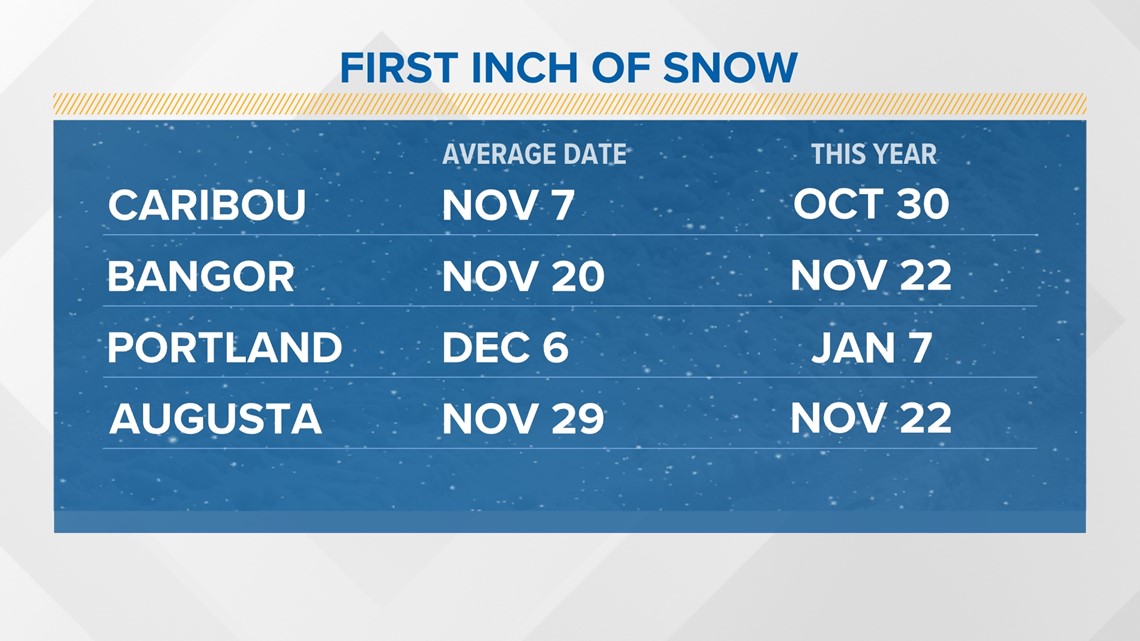
Almost nothing in November, over a foot short in December, it's been tough for snow lovers in the Portland metro.
That began to change just over a week ago when 12.7" of show fell along the southern coast of Maine in one day. It gave a huge bump to the numbers and should help us get to our average for the month. Of course, coastal Maine has a few months of winter left to add on more snow and hit it's yearly averages.

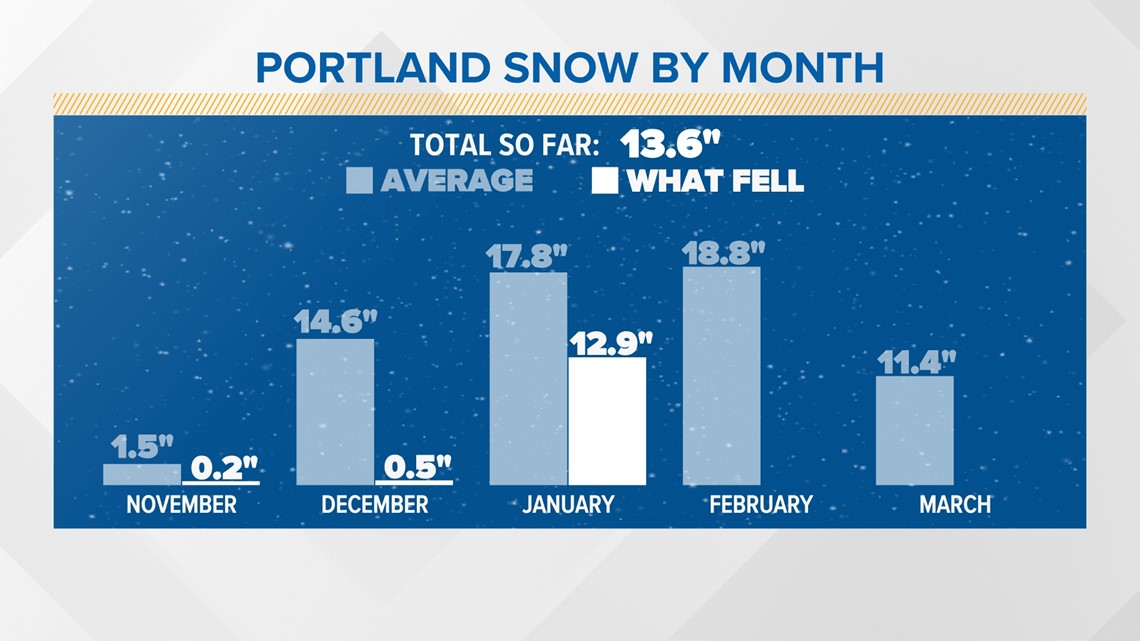
This story isn't just true for Portland. Many cities across the state are seeing the same thing as well. Between Portland, Bangor, and Caribou, we're all about a foot short of where we should be for snow totals this season.

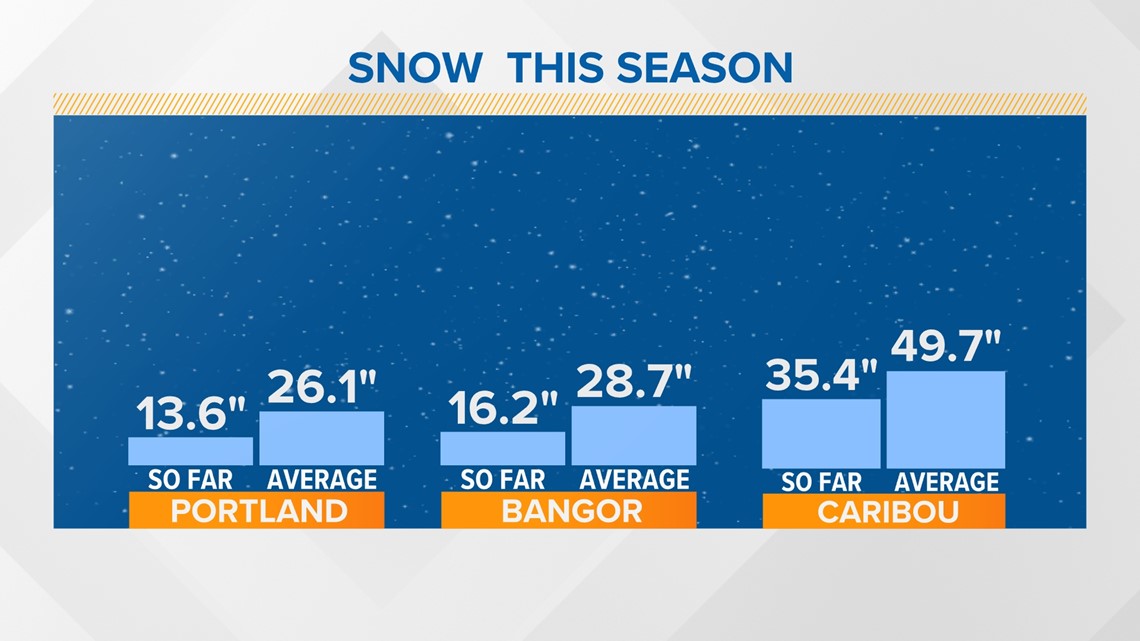
Due to the lack of snow, warmer temps, and rain, we're noticing a lot of brown, dead grass instead of white, plush snow covered landscapes. The most snow is up in the mountains where they're holding onto 12-24 inches of snow, maybe even more at the highest peaks. The rest of state is looking a bit different - less than two inches for many, leftover from last week.
If you compared this map to an elevation map, it would line up pretty well. The highest elevations have the most snow while the lowest have little to none.

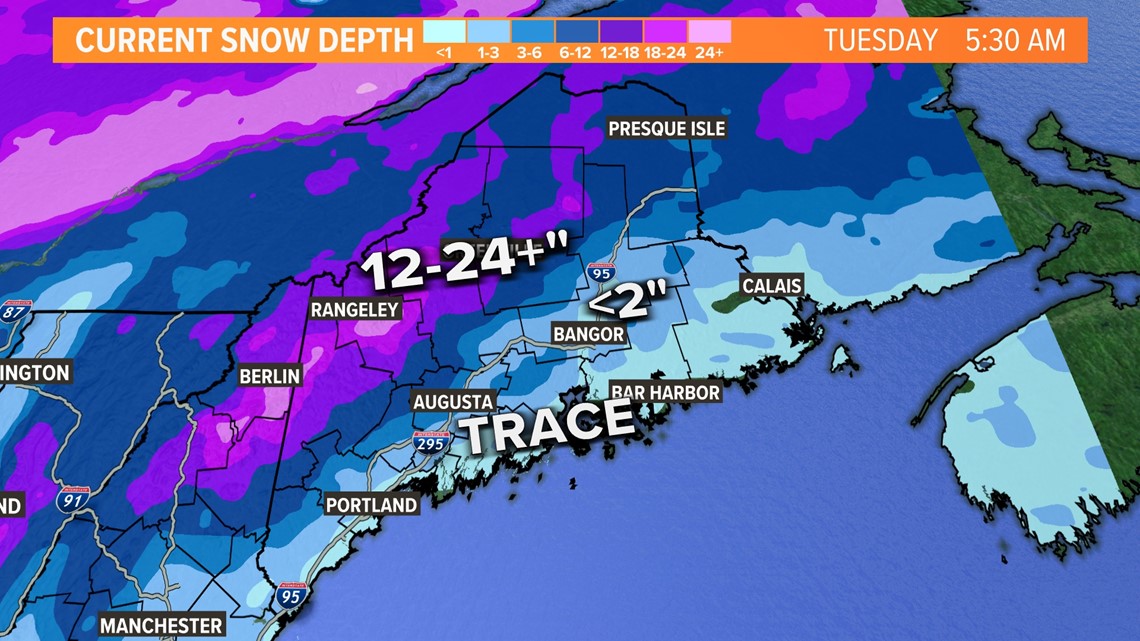
If you want the snow - good news! It's falling on Tuesday, which will help bump those numbers up across the state. Following this storm, many of us will get closer to our normal totals for January.

